14-days Sailing – Split – Split S1 South Route 1

Day 1: Split - Milna (Brač)
Milna is the most protected as well the most beautiful port on the island of Brač. Protected from stronger winds and refreshed by the maestral wind of summer afternoons, it is the ideal haven for people and boats alike. Milna is situated at the bottom of a spacious cove at the western coast of Brač. Crystal blue sea, shades of centennial pine forests, sunlit facades built of Brač stone, ideal diving conditions, domestic and healthy food - all the reasons for coming to this beautiful Mediterranean town. There is a large selection of excellent fish restaurant, pizzerias and many caffe bars in Milna, situated in the immediate vicinity of the sea. ACI marina Milna is located in the southeastern part of the Milna cove, adjacent to the town.

Day 2: Milna - Palmižana
Off the southwestern coast of the island of Hvar, a group of around 20 isles and reefs is situated, known as the Pakleni otoci (infernal islands). Pakleni otoci are a unique and the most distinguished natural beauty of Hvar. Forested isles amidst crystal clear blue sea, countless secluded beaches and beautiful desolate inlets, present a far-known sunny Arcadia of Hvar. The best shelter on Pakleni otoci is the ACI marina Palmižana on the northeastern coast of the isle of St. Klement, which is shielded from all winds. However, in a strong southwestern wind, some tidal waves may occur. Palmižana is the oldest and best known resort on Hvar. It is surrounded by thick pine forests and various other exotic vegetation.
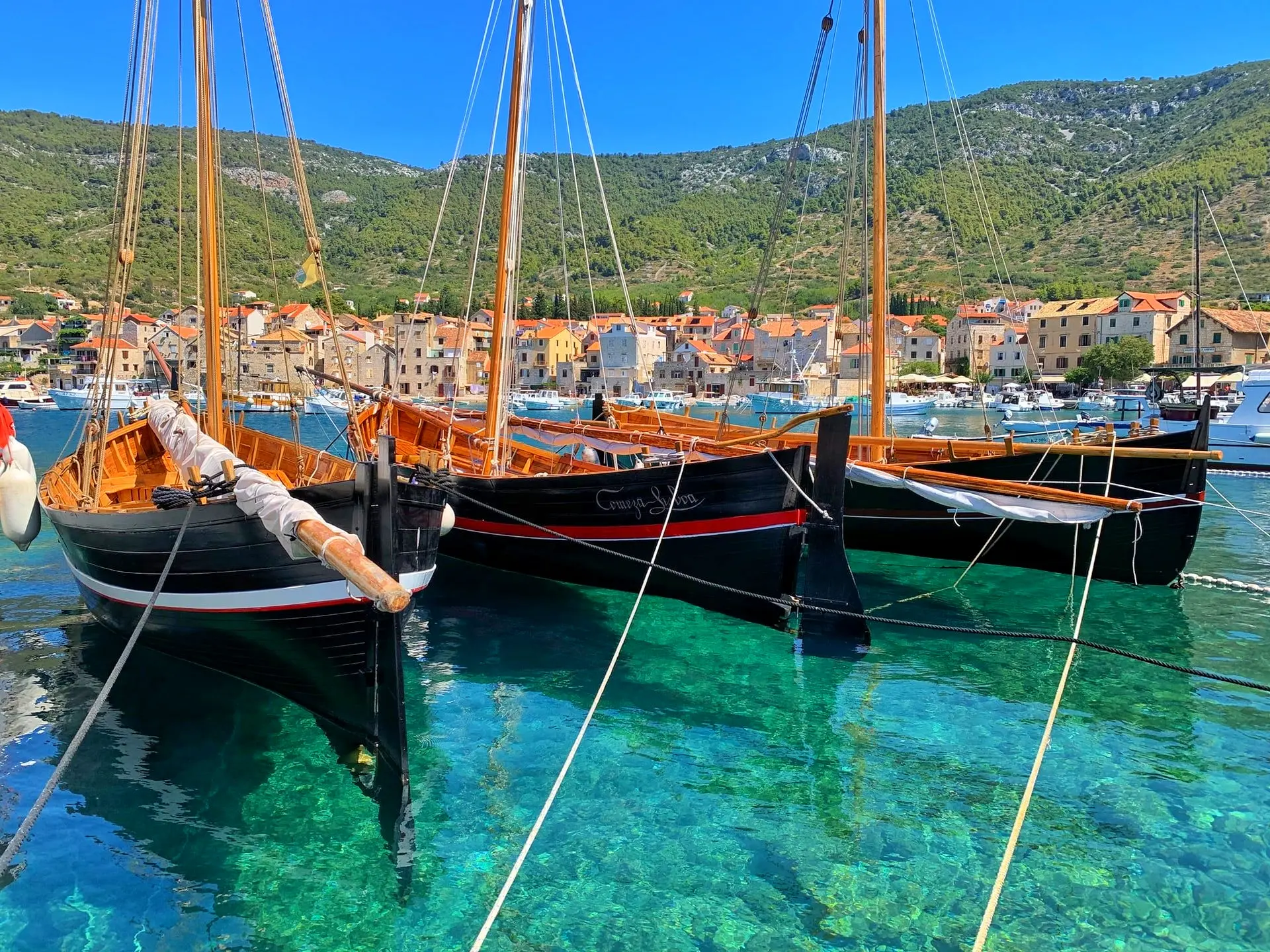
Day 3: Palmižana - Komiža (Vis)
Komiža, the port and town, is situated on the west coast of the island of Vis, along the northeastern side of the spacious bay of Komiža. The port is protected against the east and northeastern winds, but is exposed to the west and southwestern winds. Komiža is considered the cradle of fishing in the Adriatic, as the Fishermen's museum in town testifies. Unique in Croatia, it is located in the old Venetian tower at the town riva. The construction of wooden ships over the centuries has given birth to the "falkuša", a fishing ship endemic to Komiža, unique in the world for its specific build and sails.
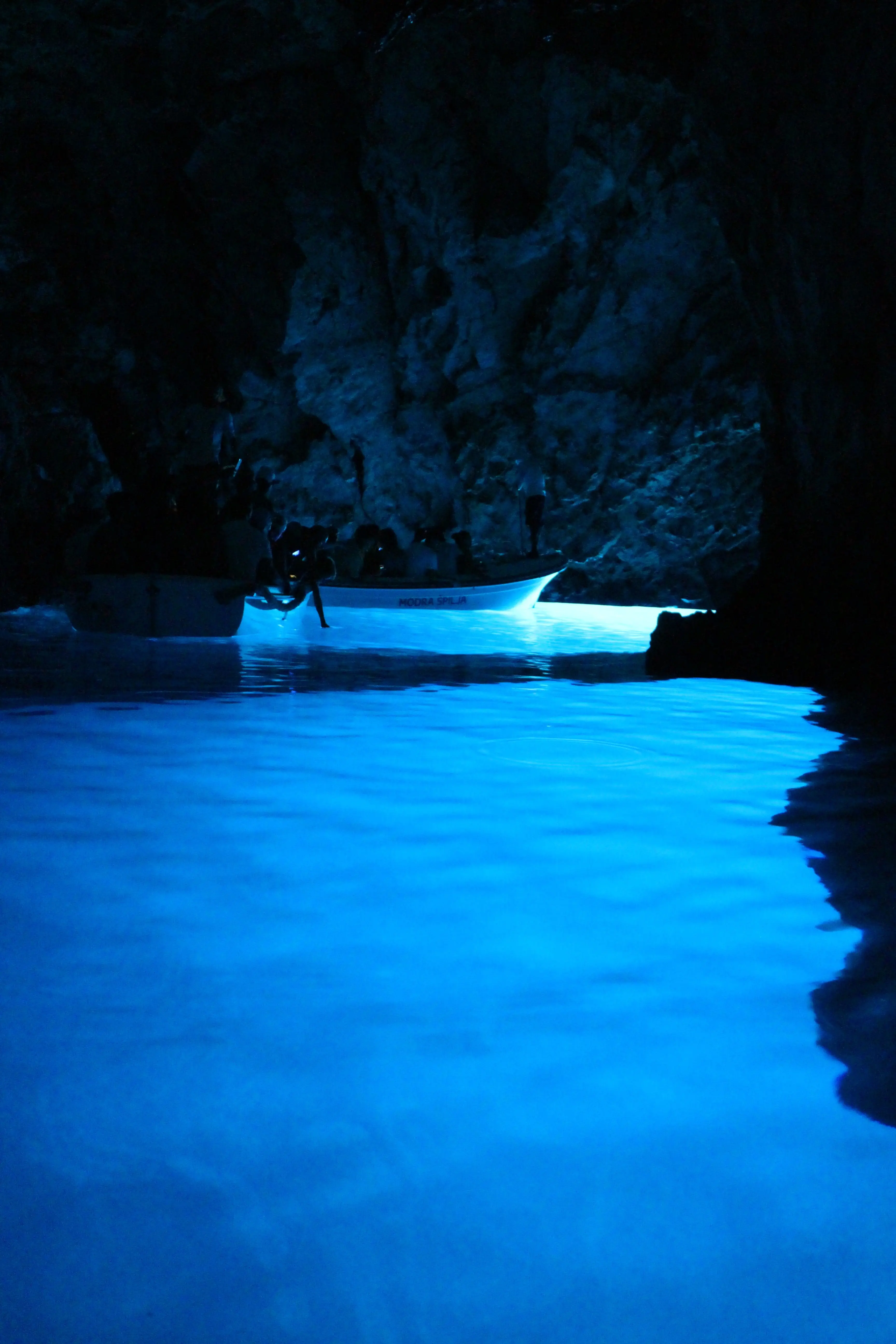
Day 4: Komiža - Biševo - Vela Luka (Korčula)
Not far from the island of Vis, a small paradise island rises from the sea - Biševo. It is renowned for its beautiful sandy beaches, colorful underwater life and unusual natural phenomena. The coastline of Biševo is dotted with many caves, the most famous of which being the Blue Cave, in the Balun cove. On sunny days, at high noon, the sunlight penetrates the cave through its underwater entrance, is reflected off the white rock bottom and illuminates the cave in astounding shades of blue, and items submerged inside in all the shades of silver. Entry to the Blue Cave is permitted by small rowboat only, and only in quiet,waveless weather. The area of Vela Luka on the island of Korčula bears archaeological evidence of habitation as early as the Old Stone Age - 20,000 B.C. To the present day, the Illyrians, Romans and Slavic peoples have all left their marks on this soil; with the Vela Luka of today blossoming since the 18th century to the present day. The town of Vela Luka is located at the end of a bay 9,2km long, offering excellent shelter from the elements. Trips are organized many times a day from here, to the many surrounding islands, including the well-known Proizd and Ošjak.
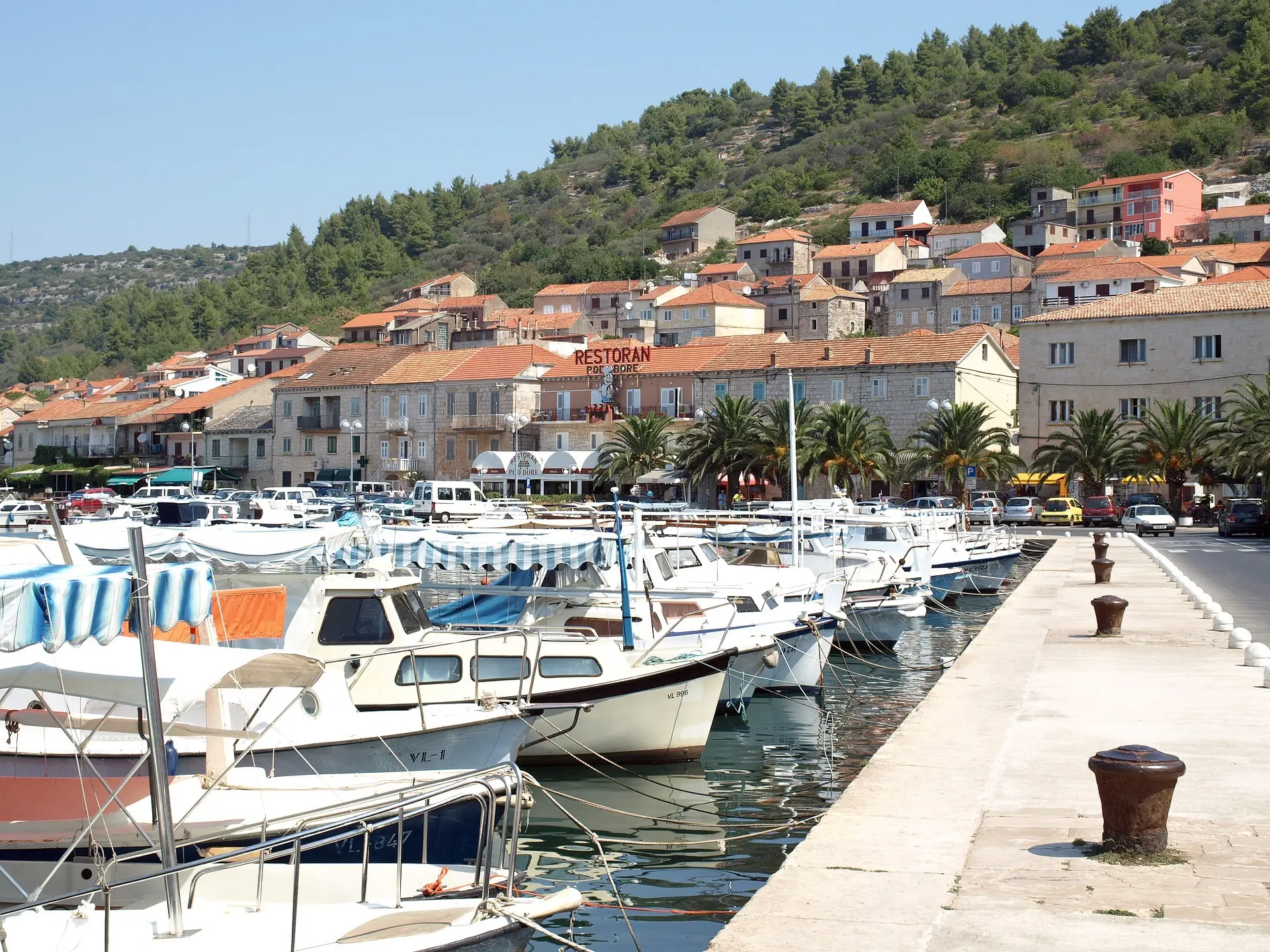
Day 5: Vela Luka - Zaklopatica (Lastovo)
Zaklopatica is a cove on the north side of Lastovo, only 2km away from the town Lastovo. It is possible to berth smaller boats at its modest riva, or in the middle of the cove up to 15m deep. Almost closed up by the isle in front of it sharing its name, the entrances to the cove are 1m-7m deep. Zaklopatica is a perfect starting point for the exploration of Lastovo's beautiful natural environment, whether via land, sailing, or diving.
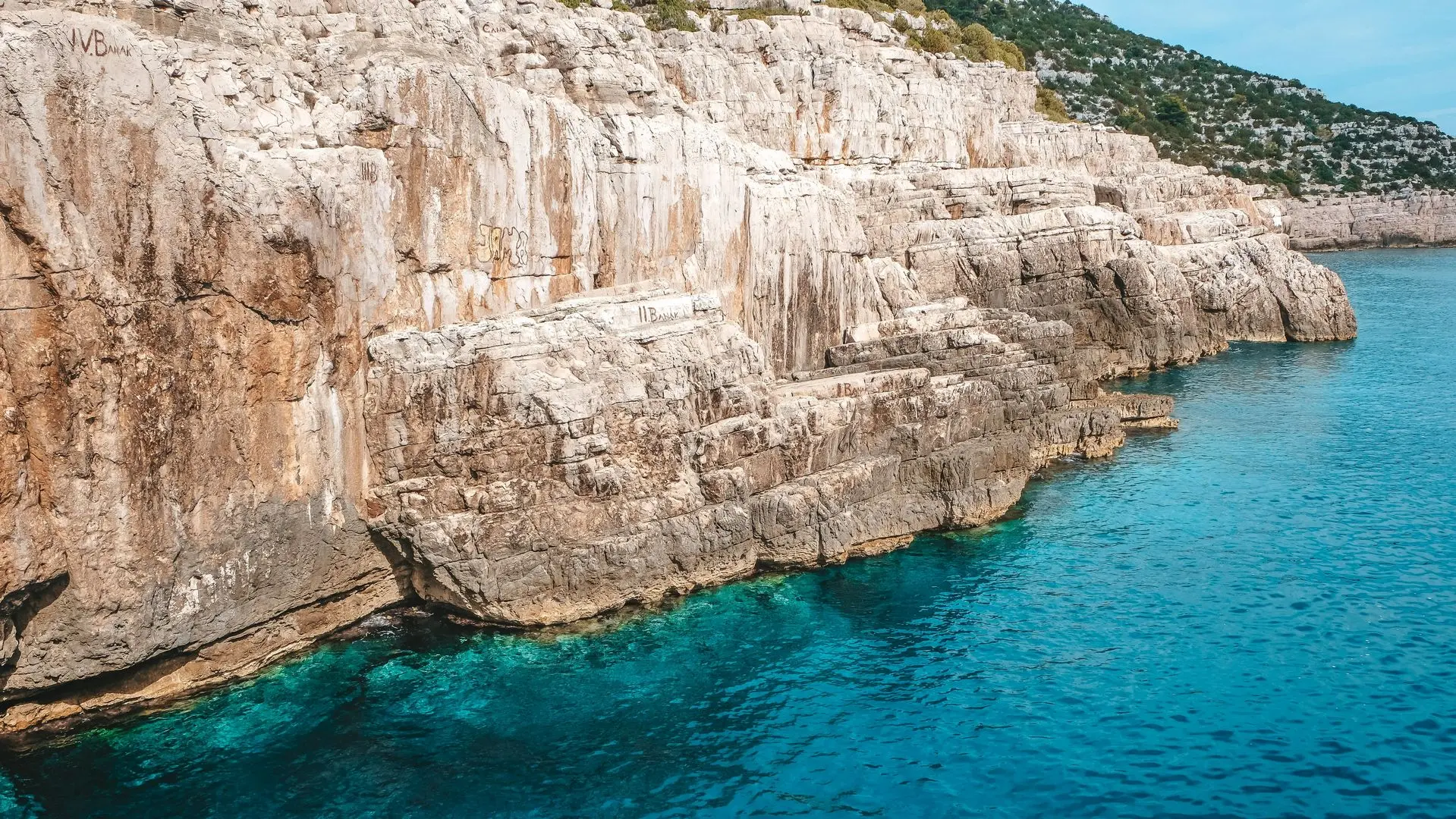
Day 6: Zaklopatica - Polače (Mljet)
Polače is a cove on the north side of the island of Mljet, naturally shielded against all winds. It offers berthing from 2m - 5m depth on several locations within the cove, and larger vessels berths at several places at its mouth. Caution is advised when entering the cove, due to many shallow areas.
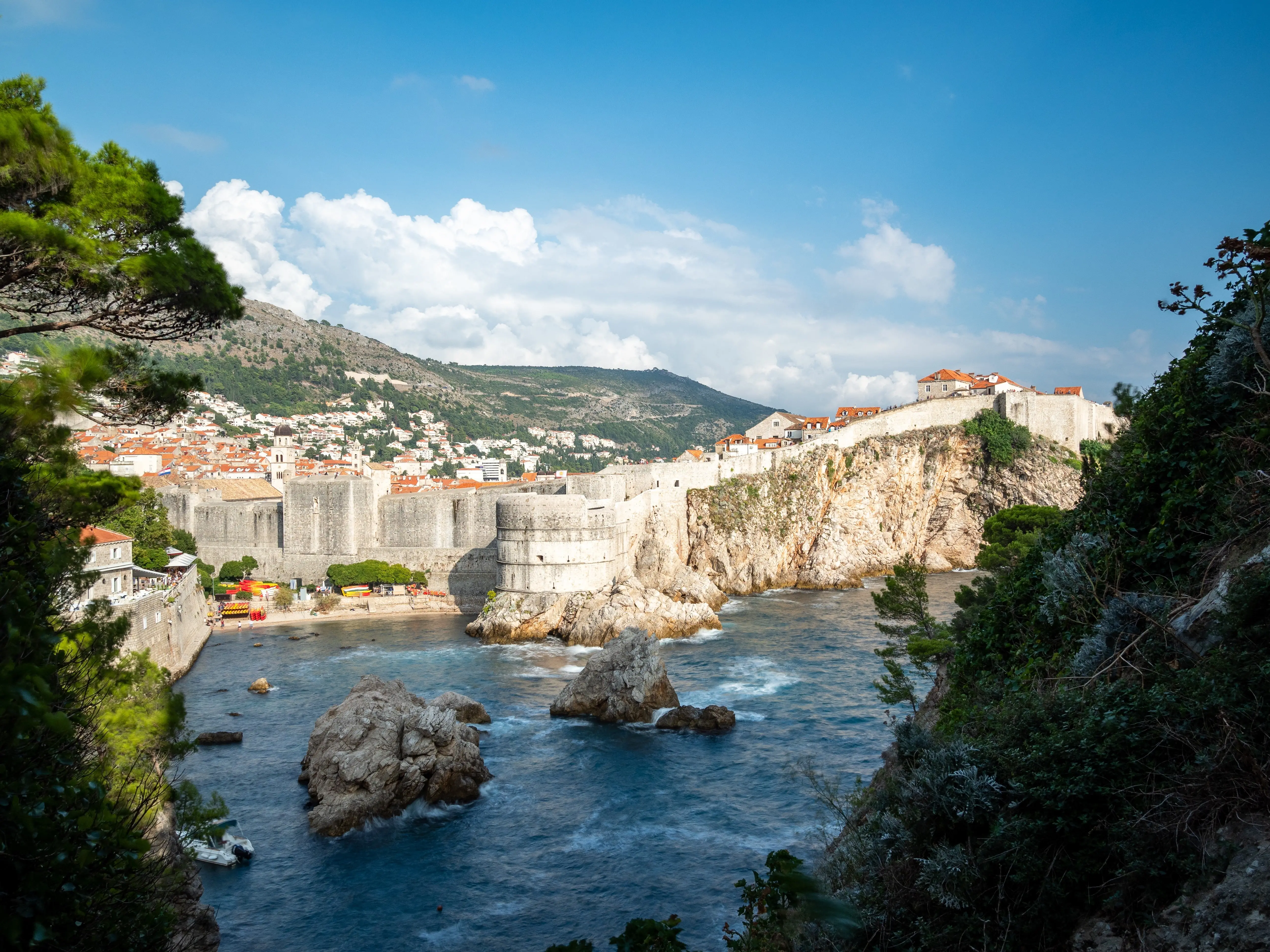
Day 7: Polače - Dubrovnik
The city of Dubrovnik, once the center of the Dubrovnik Republic which, for a time, competed on equal ground with Venice in the north, is today one of the most important tourist and historic centers on the Adriatic, as well as the Mediterranean. By far the best way to experience the vast cultural and historical heritage of Dubrovnik, is to traverse its streets on foot. A stroll over the famous Stradun, and the 25m high, 2km long City walls, will take you past numerous palaces, churches, and various places whose lesser significance all adds up to the vast glory of Dubrovnik. Its name is somewhat of a synonym for Croatia in the far corners of the world, and the more you learn of Dubrovnik, the less surprised you will be to know that its population increases tenfold during the peak of the tourist season.
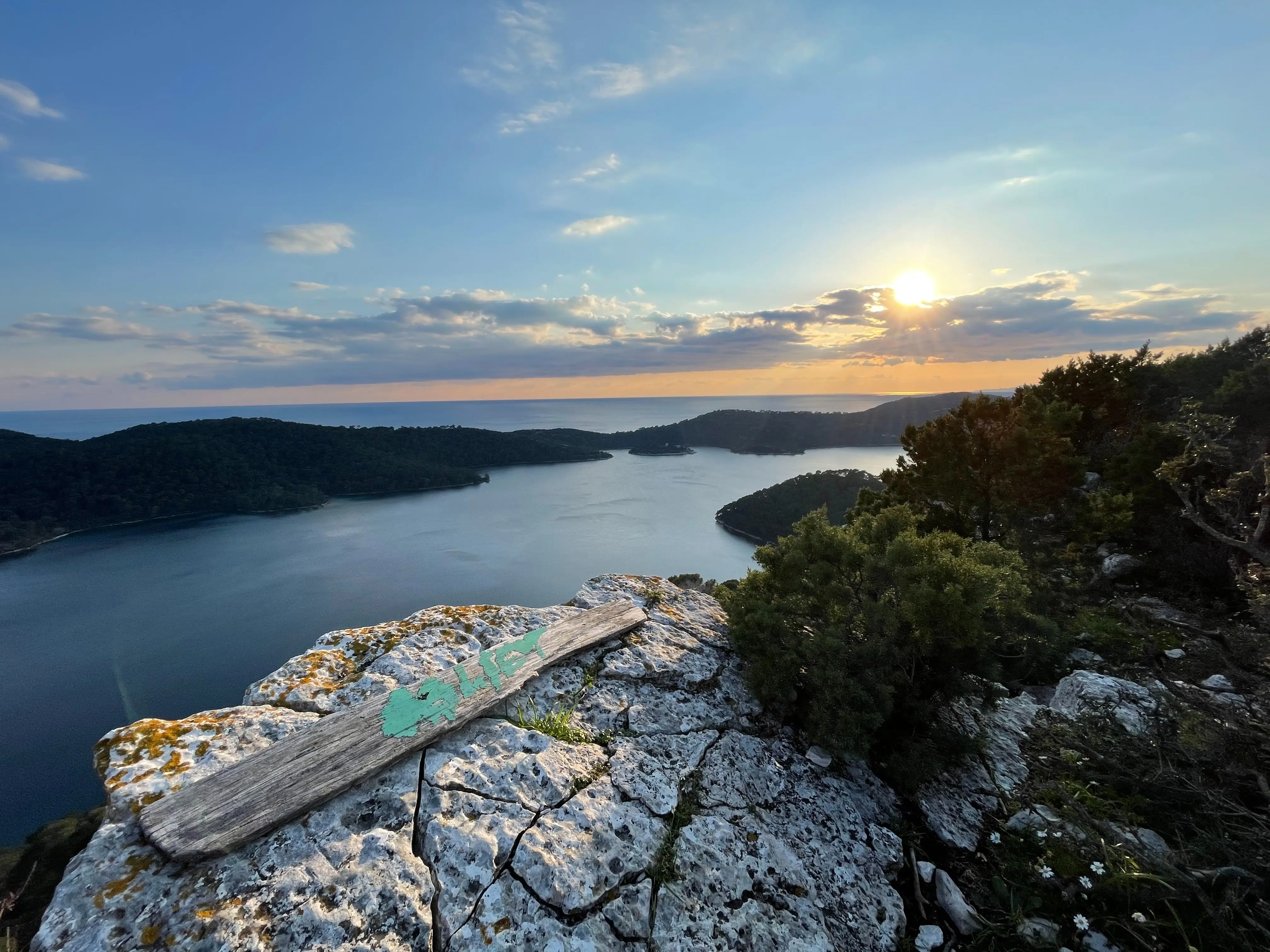
Day 8: Dubrovnik - Okuklje (Mljet)
Okuklje is the best-protected cove on the island of Mljet, shielded from all the winds. It allows for berths at several locations within it, from 2m - 4m deep. Be mindful of the reef in the southwestern part of the cove, which is marked with an iron pole.
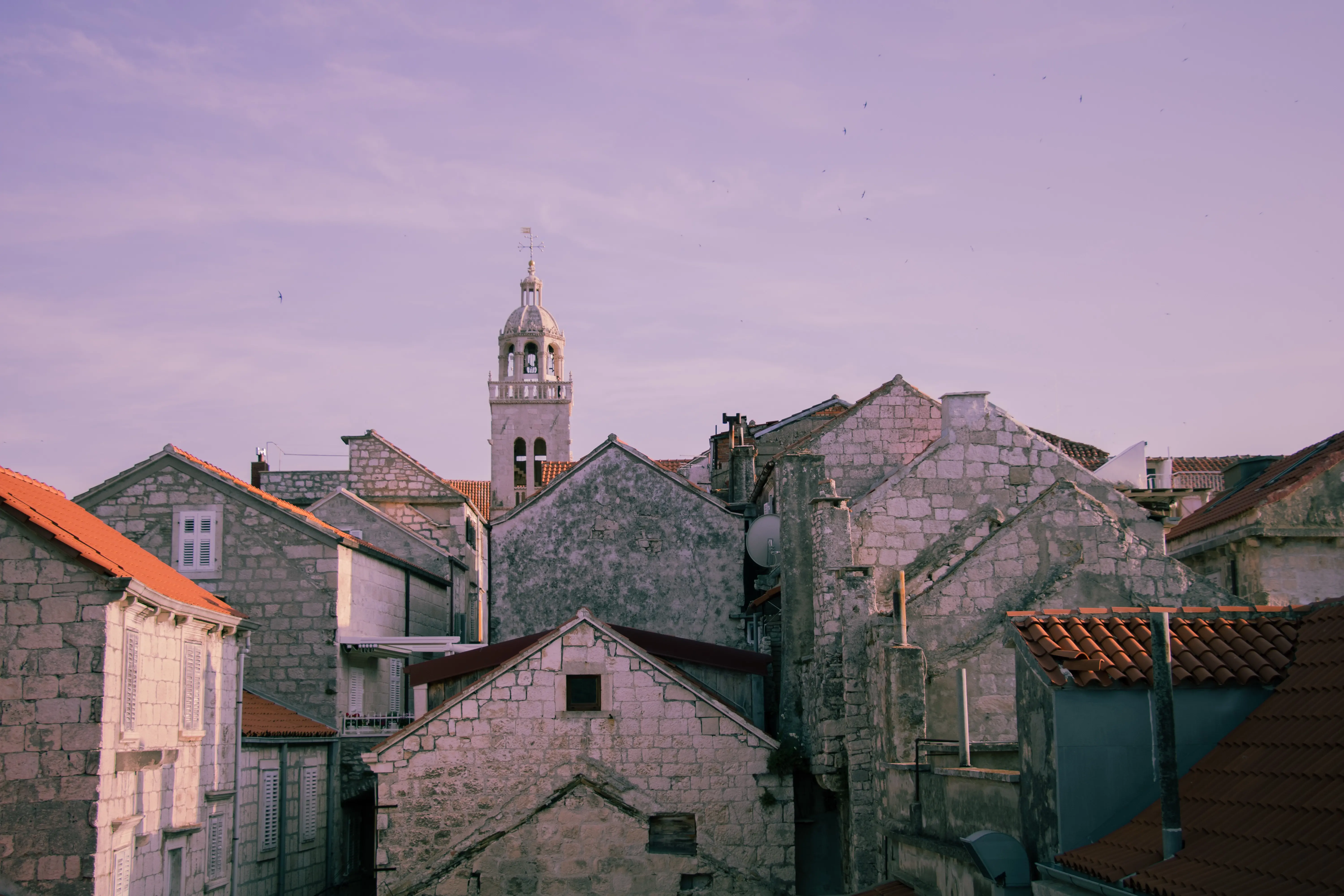
Day 9: Okuklje - Korčula (Korčula)
The island of Korčula is the jewel of the Adriatic archipelago. The island is indented with a series of isles and inlets, and a special mark is bestowed on it by its lush vegetation. Around it, you can enjoy swimming on many beaches, as well as diving in an underwater world of exciting flora and fauna. The city of Korčula is a historic and tourist center of its island. It is one of the best preserved medieval cities in the Mediterranean. Moreška, danced within Korčula, is one of three chivalric dances that you can witness only on this beautiful island. The town of Korčula is also considered the birthplace of the world's greatest traveller, Marco Polo, whose house of birth is located in the center of the old town. ACI Marina Korčula is situated in a small inlet east of town. Its northern side is protected with a breakwater.
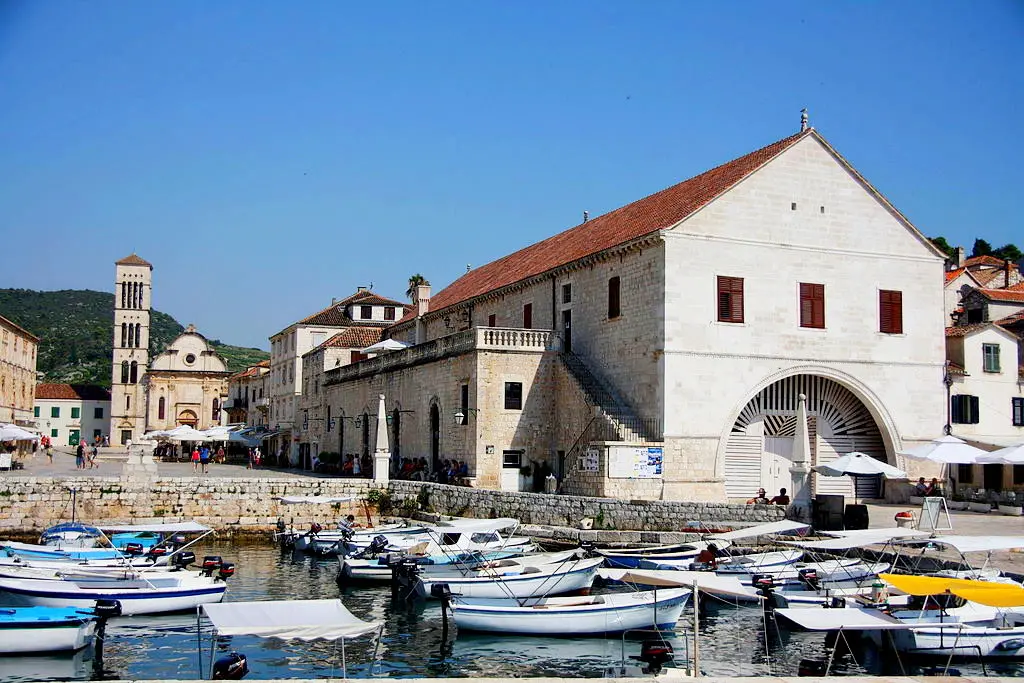
Day 10: Korčula - Jelsa (Hvar)
Jelsa is a quiet little town on Hvar, close enough to the main tourist resorts for all the benefits; but still far enough to maintain some of the peace and quiet that traditionally envelops Adriatic islands. The port of Jelsa offers berths up to 12m deep, and is exposed on the north side; as such it is not recommended for berthing in strong bura.
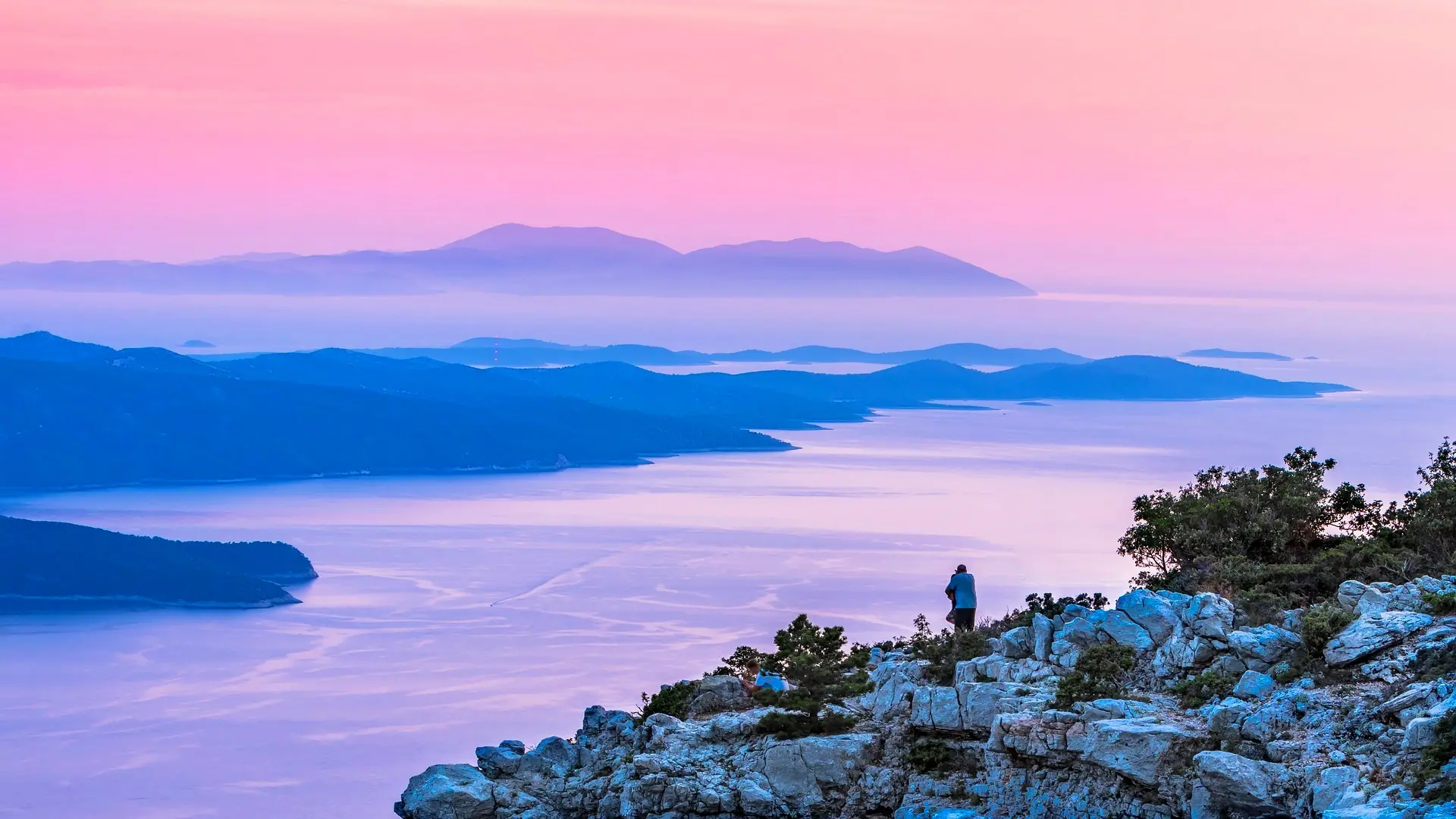
Day 11: Jelsa - Cove Lučice (Brač)
Uvala Lučice is one of the most popular berths in the Adriatic. It resembles a three-leaf clover and is characterized by high sea transparency and lush pine forest. It is construed of several prongs of different orientation, making a good shield from almost any wind, depending on anchor location.

Day 12: Uvala Lučice - Maslinica (Šolta)
Maslinica, nestled on the western coast of the island of Šolta, stands as the sole settlement in this enchanting region. Blessed with a plethora of exquisitely wind-shielded coves and secluded inlets, as well as a captivating mini-archipelago of seven isles, Maslinica emerges as an extraordinary haven for nautical enthusiasts, divers, and underwater fishing aficionados. Among its many charming coves, the Šešula cove reigns as the most sought-after destination. Thanks to its excellent positioning and natural protection, it beckons visitors seeking a serene and idyllic retreat. Maslinica's magnetic allure lies in its breathtaking scenery and abundant opportunities to explore the mesmerizing underwater world, making it a must-visit destination for those yearning to experience the wonders of the sea.
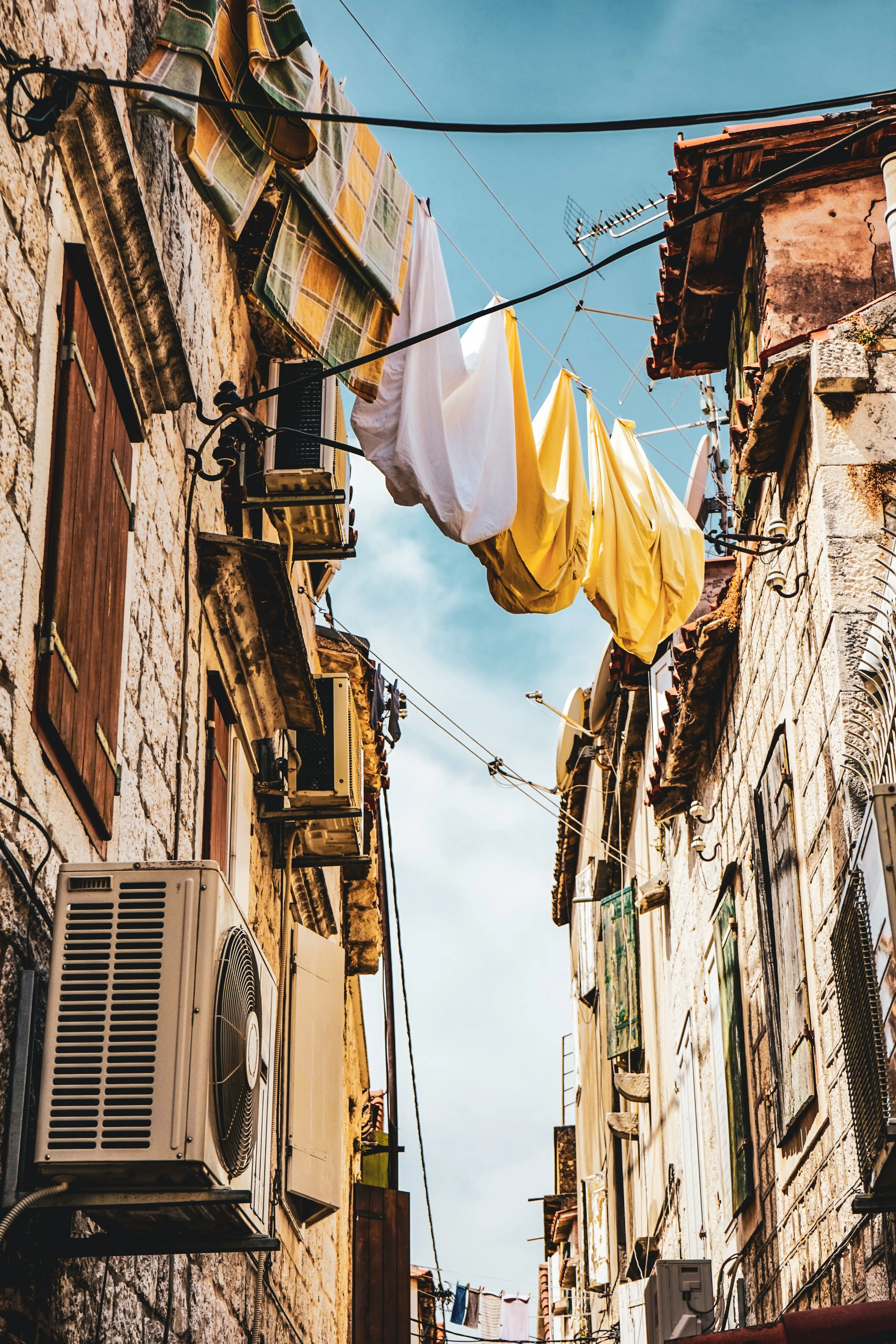
Day 13: Maslinica - Trogir
Trogir is a city-museum in the true sense. In all of Central Europe it is considered as the best preserved Romanesque-Gothic city. The castle and the tower, surrounded by stone walls, contain the old core of Trogir. The most significant cultural monument is the Trogir cathedral. Its western gate Portal, built by master Radovan, stands for the most monumental piece of Romanesque-Gothic sculpture in Croatia. Trogir thrills its visitors with its many cultural-historic monuments and narrow alleys, and its many art collections with numerous masterpieces. The city of Trogir is situated upon the coast of the Kaštelanski bay, on an island connected to Čiovo and the mainland by stone bridges. ACI marina Trogir is located on the north side of Čiovo, between the Trogir bridge and cape Čubrijan, opposite to the city of Trogir. The Trogir riviera is marked by rich Mediterranean vegetation, olive orchards as vineyards, numerous islands and inlets, gravelly and sandy beaches. Well indented, pristine coastline is very favorable to sailors.

Day 14: Trogir
Return to base

